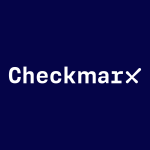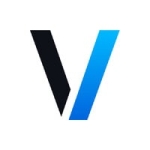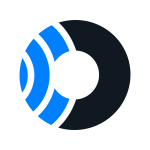What is our primary use case?
We use it to do software composition analysis. It analyzes the third-party libraries that we bring into our own code. It keeps up if there is a vulnerability in something that we've incorporated, then tells us if that has happened. We can then track that and take appropriate action, like updating that library or putting a patch in place to mitigate it.
They have also added some additional products that we use: One of which is container security. That product is one that analyzes our microservices containers and provides them with a security assessment, so we are essentially following best practices.
How has it helped my organization?
From the software composition analysis perspective, it first makes sure that we understand what is happening from a third-party perspective for the particular product that we use. This is very difficult when you are building software and incorporating dependencies from other libraries, because those dependencies have dependencies and that chain of dependencies can go pretty deep. There could be a vulnerability in something that is seven layers deep, and it would be very difficult to understand that is even affecting us. Therefore, Snyk provides fantastic visibility to know, "Yes, we have a problem. Here is where it ultimately comes from." It may not be with what we're incorporating, but something much deeper than that.
The second thing that is critical in some cases, and Snyk provides as a value, is their guidance. Somewhere along the chain it figures the vulnerabilities out, then Snyk provides an update. So, what you need to do is go update to the latest version of that library, which is easy. However, sometimes it's not that easy, then Snyk has great guidance where you could go to manually patch it yourself, and they've made that a pretty seamless process. You can run a command with this new tooling, and it will go fix the underlying vulnerability for you. That is unusual. I have not seen that in other products.
It has improved the overall security of our applications by removing vulnerabilities and things that we are incorporating into our product. It ultimately identifies vulnerabilities in our product as well. It helps us when we do other types of testing of our applications, as we're not finding issues by something we had incorporated. Therefore, it reduces the vulnerabilities in our application.
What is most valuable?
For a developer, the ease of use is probably an eight out of 10. It is pretty easy to use. There is some documentation to familiarize themselves with the solution, because there are definitely steps that they have to take and understand. However, they are not hard and documented pretty well.
We have integrated Snyk into our SDE. We have a CI/CD pipeline that builds software, so it's part of that process that we will automatically run. We use Jenkins as our pipeline build tool, and that's what we have integrated. It is pretty straightforward. Snyk has a plugin that works out-of-the-box with Jenkins which makes it very easy to install.
Snyk's vulnerability database is excellent, in terms of comprehensiveness and accuracy. I would rate it a nine or 10 (out of 10). They have a proprietary database that is very useful. They are also very open to adding additional packages that we use, which might be not widely used across their customer base.
What needs improvement?
Snyk's ability to help developers find and fix vulnerabilities quickly is pretty good. From a one to 10, it is probably a six or seven. The reason is because they make it very clear how to take the steps, but it's not necessarily in front of the developers. For instance, my role here is security, so I go and look at it all the time to see what is happening. The developer is checking code, then their analysis runs in the pipeline and they have moved on. Therefore, the developers don't necessarily get real-time feedback and take action until someone else reviews it, like me, to know if there is a problem that they need to go address.
Snyk does a good job finding applications, but that is not in front of the developers. We are still spending time to make it a priority for them. So, it's not really saving time, e.g., the developers are catching something before it goes into Snyk's pipeline.
A criticism I would have of the product is it's very hierarchical. I would rate the container security feature as a seven or eight (out of 10). It lists projects. So, if you have a number of microservices in an enterprise, then you could have pages of findings. Developers will then spend zero time going through the pages of reports to figure out, "Is there something I need to fix?" While it may make sense to list all the projects and issues in these very long lists for completeness, Snyk could do a better job of bubbling up and grouping items, e.g., a higher level dashboard that draws attention to things that are new, the highest priority things, or things trending in the wrong direction. That would make it a lot easier. They don't quite have that yet in container security.
One area that I would love to see more coverage of is .NET. We primarily use JavaScript and TypeScript, and Snyk does a great job with those. One of the things that we are doing as a microservices developer is we want to be able to develop in any language that our developers want, which is a unique problem for a tool like this because they specialize. As we grow, we see interest in Python, and while Snyk has some Python coverage that is pretty good, it is not as mature. For other languages, while it's present, it is also not very mature yet. This is an area for improvement because there was a very straightforward way that they integrated everything for Node.js. However, as other languages like Rust and .NET gain popularity, we may just have one very critical service in 200 that uses something else, and I would like to see this same level of attestation across them.
For how long have I used the solution?
What do I think about the stability of the solution?
The stability is very good. We have not run into issues that have been large-scale outages. It is not a real-time solution. So, even if we had an outage of a day, it wouldn't really affect the way we operate. It is an asynchronous thing behind the scenes.
It requires about 200 hours a year of time to maintain it. By maintain it, I mean just go in, use the reports, validate them, and kind of manage them. There is a resource cost to us to operationalize it, but it's about 200 hours.
What do I think about the scalability of the solution?
It is very capable at what it does. It has a pretty good completeness of vision and its execution is good.
There are certain tools which Snyk has that developers can use. Those have a very low level of adoption. It was adopted into our pipeline, so we get things there and report them back to development. However, development largely has not adopted it themselves. We have push the findings to them.
Most of the users are a mix between security and operational folks as well as some development managers. Unfortunately, the developers themselves don't necessarily adopt Snyk on their own. Therefore, it's really more those who are running the pipeline, like our operations team, my security team, and the managers who are receiving the reports if there's something in Snyk or there is actually an issue.
We are using all the products they provide today. We use it for everything that we develop, so I don't know that there is a whole lot more that we can use unless they provide a further offering.
How are customer service and technical support?
Snyk's technical support is middle of the road. I would rate it a six (out of 10). They are friendly and try to be helpful. Some of the times that I have actually had to reach out to them, it takes a lot of back and forth to get issues understood and resolved. They do try, but it can be a lengthy process.
Which solution did I use previously and why did I switch?
We started using this solution at this company when the company was started, so it's the only thing we have ever used.
In the past, I have used Veracode, WhiteHat Security, and Black Duck by Synopsys for some of their features.
How was the initial setup?
The initial setup was straightforward. Snyk was brought in at a time when there were less than five employees, and they set it up that day. We just needed one person to deploy it, and it took them a day. It was easy and so straightforward that it didn't require a project.
What was our ROI?
If I didn't see ROI, I would move somewhere else. I would probably go to a cheaper solution, but Snyk is definitely above that compliance level of value. It is really proactive, and that's where I would rather be from a security program perspective. So, I do get the value out of it.
Snyk finds problems that we may not have ever found otherwise, so it is a significant benefit for us. It reduced the amount of time by an FTE, which is about 2000 hours a year that we would spend in doing what Snyk does with its tool.
Over the course of a year, Snyk has reduced the amount of time it takes to fix problems by approximately 100 hours in our enterprise. It makes it very clear what the fix is. They provide very good remediation advice.
The total time to value will depend on the company who implements it. For us, it was pretty short, probably two to three months. While it was very easy to set up, it takes a little while to really appreciate how its findings need to be addressed within the company. It forces you to develop some processes and feedback loops that you may not have had there before. So, it took us 90 days to fully appreciate the value and start remediating findings that were initially discovered.
What's my experience with pricing, setup cost, and licensing?
With Snyk, you get what you pay for. It is not a cheap solution, but you get a comprehensiveness and level of coverage that is very good. The dollars in the security budget only go so far. If I can maximize my value and be able to have some funds left over for other initiatives, I want to do that. That is what drives me to continue to say, "What's out there in the market? Snyk's expensive, but it's good. Is there something as good, but more affordable?" Ultimately, I find we could go cheaper, but we would lose the completeness of vision or scope. I am not willing to do that because Snyk does provide a pretty important benefit for us.
Snyk is a premium-priced product, so it's kind of expensive. The big con that I find frustrating is when a company charges extra for single sign-on (SSO) into their SaaS app. Snyk is one of the few that I'm willing to pay that add-on charge, but generally I disqualify products that charge an extra fee to do integrated authentication to our identity provider, like Okta or some other SSO. That is a big negative. We had to pay extra for that. That little annoyance aside, it is expensive. You get a lot out of it, but you're paying for that premium.
Which other solutions did I evaluate?
I have not seen much in the way of false positives from Snyk. I have used a lot of software analysis tools and some are pretty bad, but Snyk is fantastic. I struggle to remember a time where Snyk found an issue that wasn't a true issue. It may have been very thorny to understand and resolve, but I have always found it to be accurate.
I have looked at other solutions, but Snyk continues to win out in evaluations. I also looked at WhiteHat Security and Black Duck by Synopsys.
We do use a product with WhiteHat Security, which is now owned by NTT Data, for SAST, DAST and manual pentesting. I have also used other independent contractors for some of that. I was looking at Synopsys and a separate product called Coverity for SAST in addition to what we use with Snyk. Separate from that, we do use SAST and DAST in interactive and mobile testing.
Snyk doesn't do SAST or DAST; they do software composition analysis. These are really separate offerings that don't really cross over. I would not go to Snyk for SAST and DAST, so I wouldn't make any competitive changes with my other vendors that are providing that solution.
There are a few other vendors who provide overlapping coverage for container security. However, for software composition analysis, we only use Snyk, so the solution is very important for us.
What other advice do I have?
If you're going to be doing any sort of software development that involves open source software, like many people do, many people have a blind spot or don't have a tool like this to even understand the risk that they take by pulling in an open source. It's not to say open source is bad, it just has a new threat surface that you have to monitor. We get a lot of benefit out of monitoring it, so I think ultimately we see problems others don't and have the opportunity to fix them. Therefore, there is a good chance that we will have fewer issues, like unauthorized data access, where they are sort of significant events because we have the visibility and the means to rectify them.
Snyk's actionable advice about container vulnerabilities is pretty good. I would rate it a six (out of 10). It's a newer offering for them, so it doesn't have the completeness of vision that their software composition analysis has, but it still appears to be accurate. It's a different type of product. They haven't packaged it to be very actionable, e.g., just do this one thing or here is the next step to fix this. It is a bit more abstract and has an explainer to it. You have to sort of distill that into what you need to do, but it still seems accurate. It is a little bit more to wrap your head around than how easy they have made the software composition product.
If you are looking for a software composition analysis product that provides remediation advice and you can't act on the details it's going to give you, you might be just as good dealing with a little bit less full featured product. However, if you want to be proactive as well as have the capability and technical resources that can move on the recommendations that Snyk makes, then you can realize a significant value out of this product. Thus, if you are at the level of maturity that can appreciate what this product can provide, it is a great value.
I would rate this solution a nine (out of 10).
Disclosure: PeerSpot contacted the reviewer to collect the review and to validate authenticity. The reviewer was referred by the vendor, but the review is not subject to editing or approval by the vendor.


















